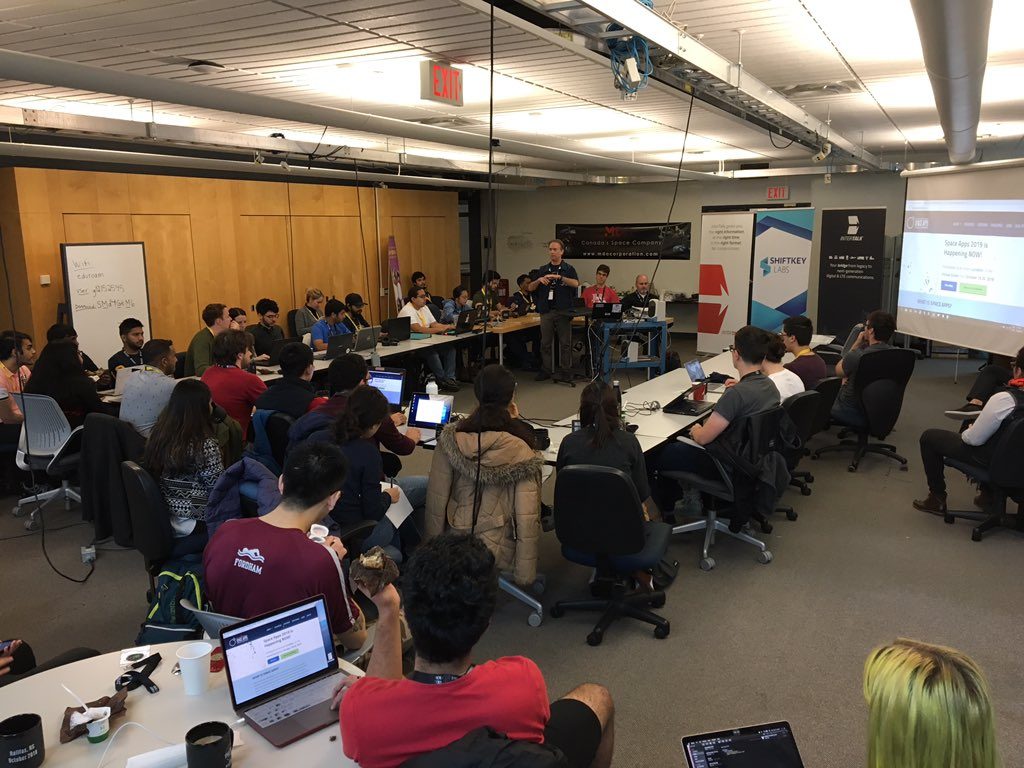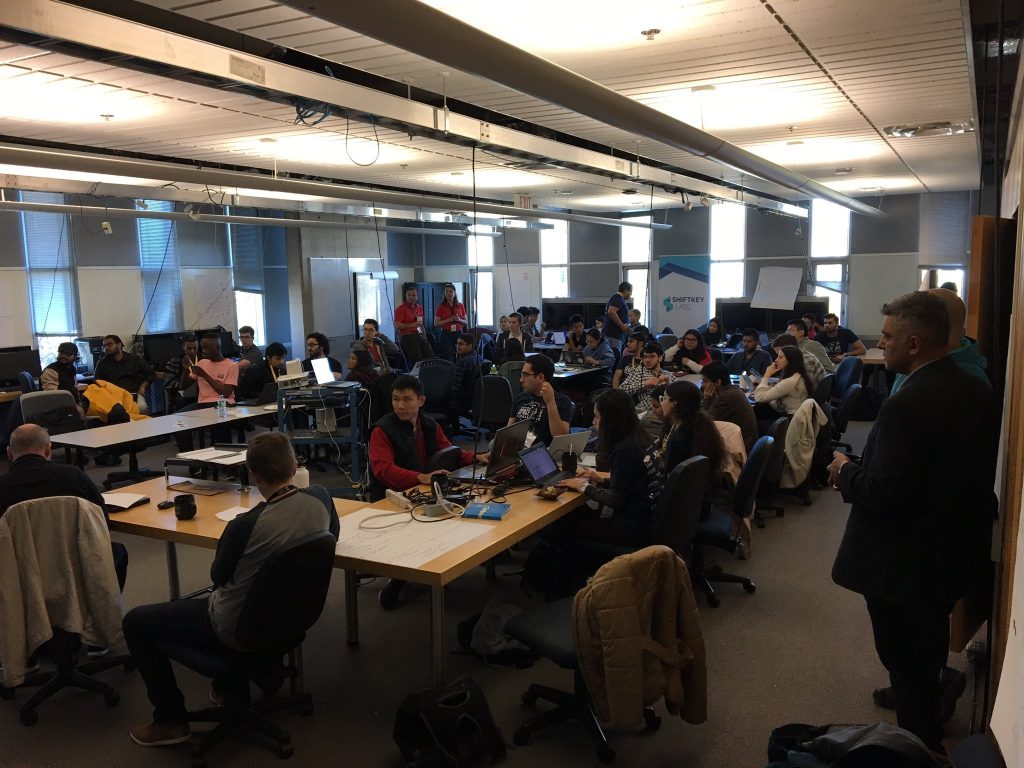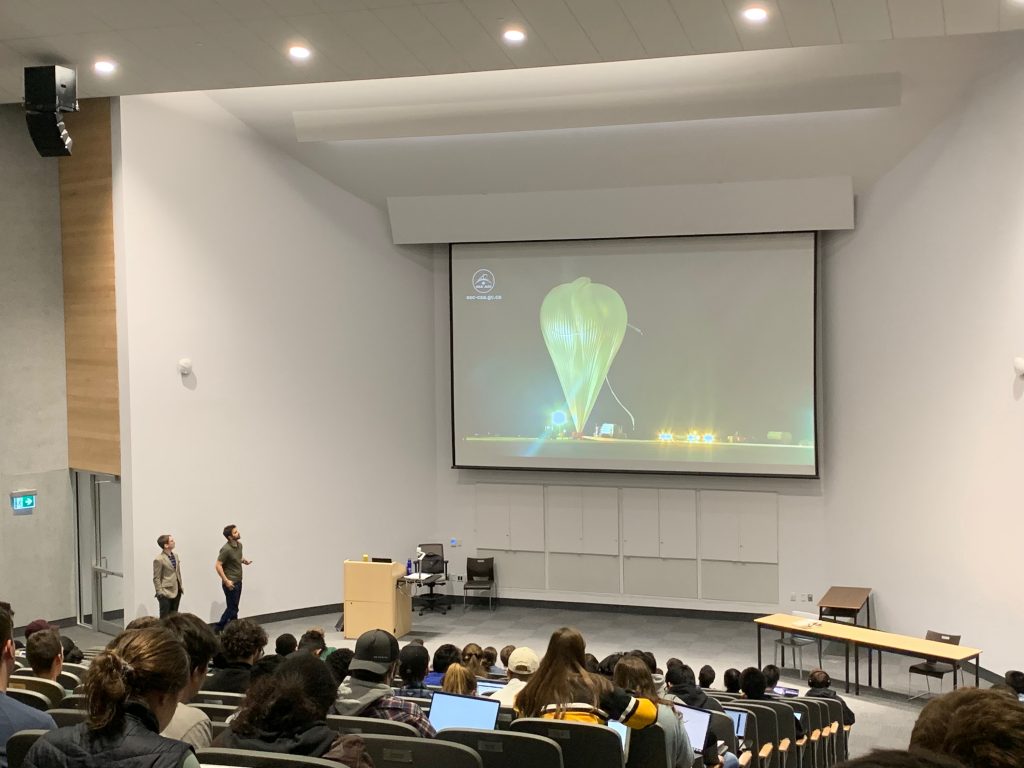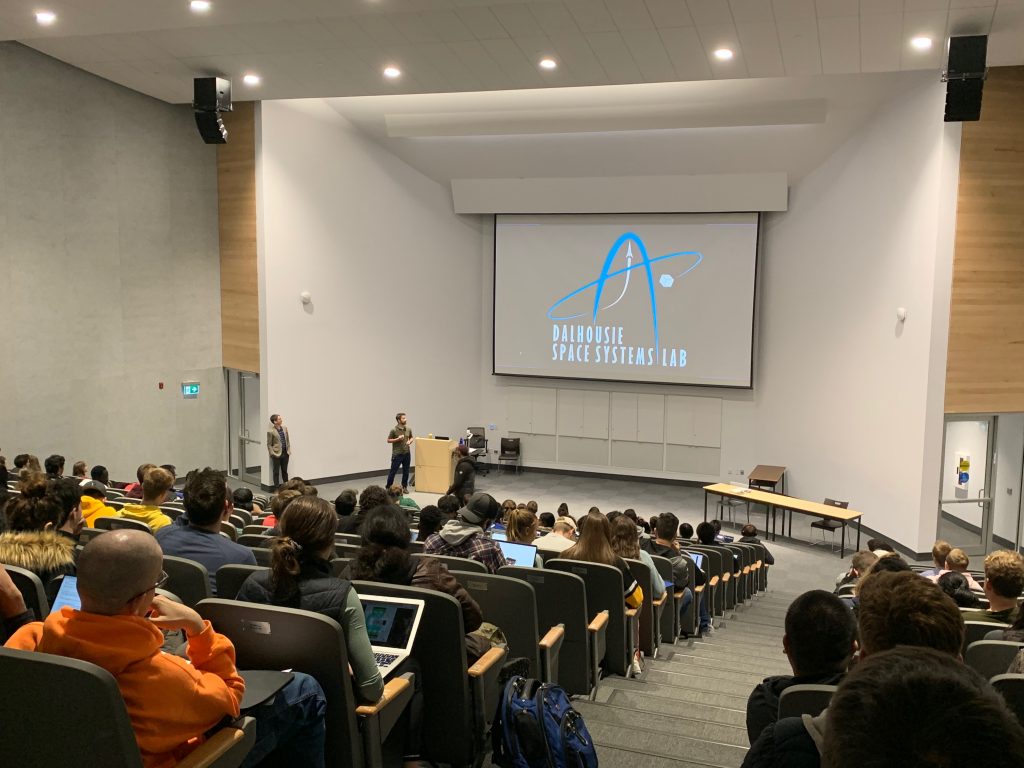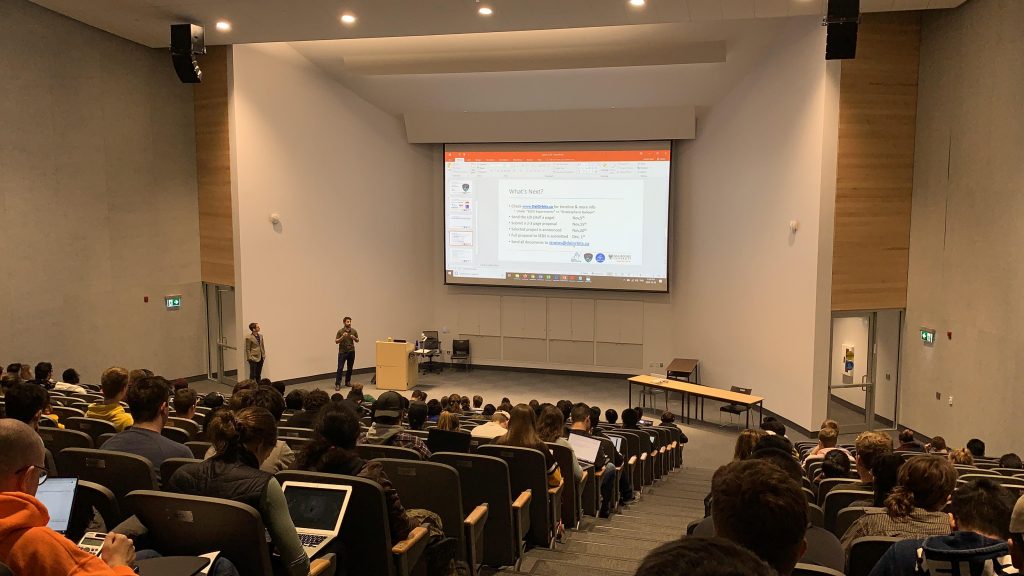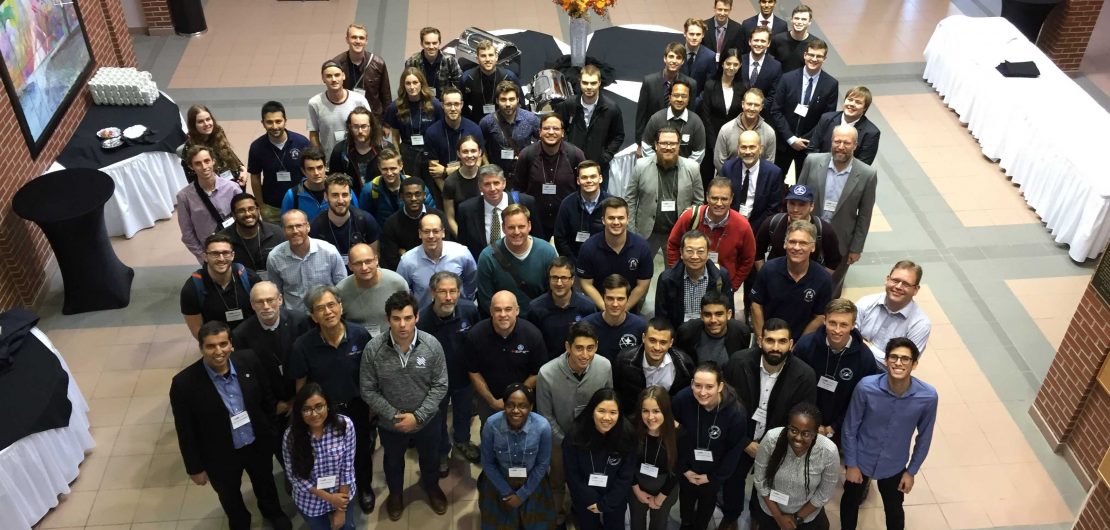
October 2019 – DSS Monthly Update
October was a busy time for the Dalhousie Space Systems Lab. This month brought many exciting things including, but not limited to: An expansion of our staff, growth of interest in space at Dalhousie University, a new office, Preliminary Design Review and the STRATOS program.
LORIS Updates
First up: Our top project at the lab, the LORIS CubeSat. On October 8th, Arad and the rest of our team leads took part in the Preliminary Design Reviews (PDR) in Fredericton, NB. All subsystem teams gave in-depth presentations to the Canadian Space Agency. Feedback was then given by experts on how best the team can refine LORIS’s design to ensure each system works most effectively with one another and is safe to fly. During that time, we released a new animation showing off our BDOT attitude control system, which shows how LORIS will move around in space using a series of magnetorquers. The DSS has also been pushed to an 8-month schedule for delivery of LORIS. After subsystem construction is complete, DSS will begin building a “flat-sat”. A flat-sat involves the testing of all prototype subsystems on a piece of plywood. This allows us to test the spacecraft’s full operational capabilities without flying in space. This is a critical step in understanding how the subsystems are functioning and gives the team time to sort out any issues. At the latest, the flat-sat will be built by April 20, 2020, with all system documentation finalized by then as well. These will be submitted for the Critical Design Review (CDR) stage to ensure LORIS is ready to be manufactured and flown.
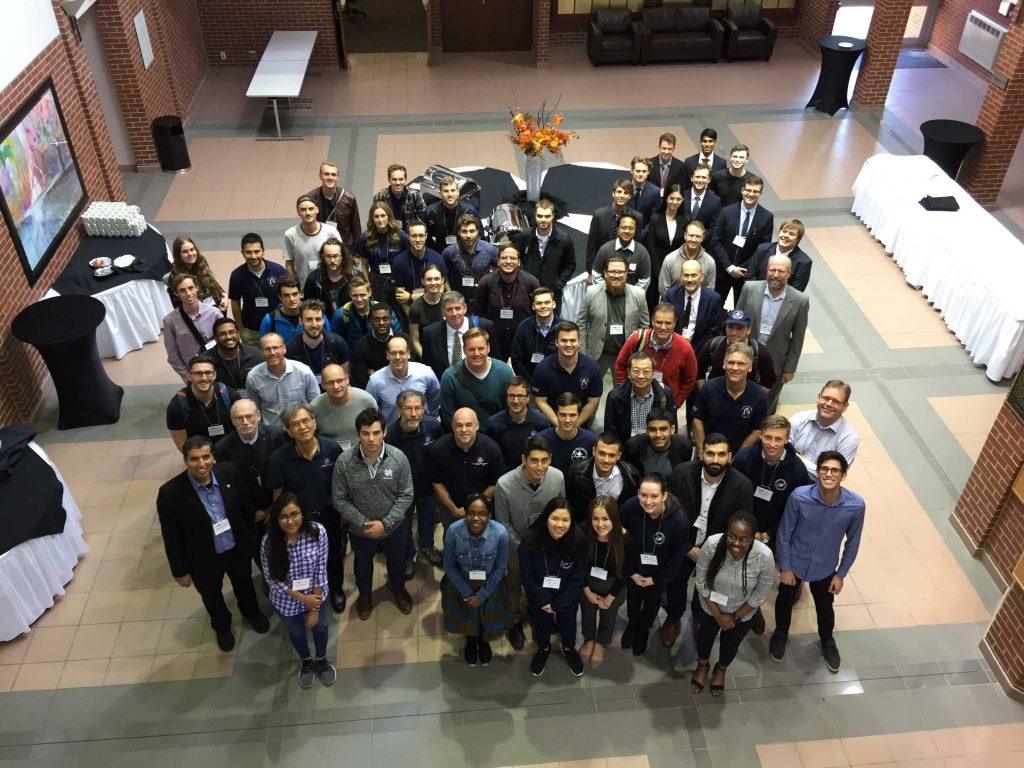
We also showed off our new home in Halifax at O’Brien Hall on Morris St. DSS will now be managed here in addition to our lab space for integrating, testing, assembling LORIS. We have also acquired a critical piece of hardware for the lab: a new coffee machine aptly named “Mr. BrewNo Mars”.
Several of our subsystem components have arrived and begun testing, including the camera suite and on-board computer. In the first week of November, the team will meet for an interface design meeting to make sure the subsystems best communicate with each other. The LORIS team is also hard at work on the communications subsystem, including approval for our ground station and software for packeting data to be sent to and from the spacecraft. We are in the beginning stages of deploying antennas in the Halifax area. Additionally, the electrical design for our attitude control system (ADCS) is almost completed and the solar cells are currently undergoing testing. Vibration testing is the critical next step in the prototyping phase and is a top priority for the Chassis team.
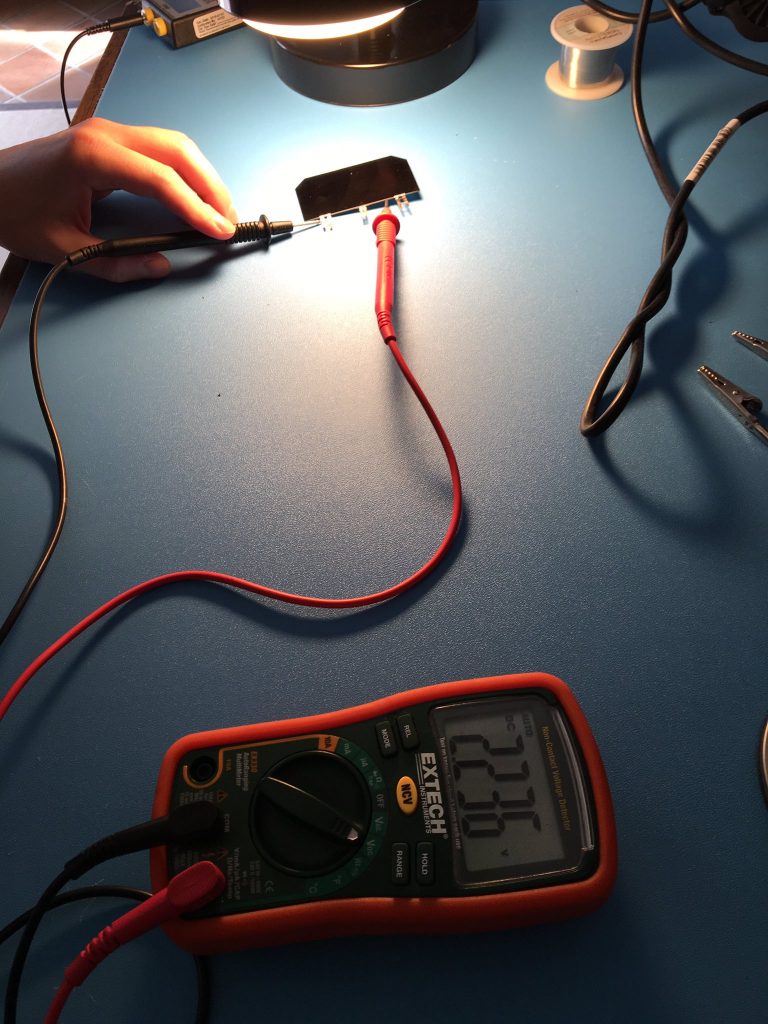
InterTalk Critical Information Systems, who joined DSS for the Halifax Space Apps Challenge, has also shown interest in this project and will lend technical support.
NASA Space Apps Challenge
For the first time ever, NASA’s International Space Apps Challenge took place in Halifax at Dalhousie’s Goldberg Computer Science Building. Hosted at ShiftKey Labs in collaboration with Dalhousie Space Systems, SuperNOVA and Emera ideaHUB, students joined thousands of others around the world in creating technology and software which utilized real data acquired by CSA and NASA. The 60 students in attendance were joined by several prestigious sponsors including representatives from InterTalk Critical Information Systems, MDA and Lixar.
Each of the student teams competed over a 48-hour period, developing a variety of applications in geomagnetic, orbital debris, interplanetary systems, and Earth/oceanography. Teams were assessed by judges from ShiftKey Labs, SuperNOVA, Emera ideaHub, and Dalhousie Space Systems Lab president Arad Gharagozli. The grand winners of Space Apps developed a system for ocean microplastic cleaning while others developed everything from power technology for venus to an eco-awareness video game. DSS also had two of its own staff members on a team that developed a rewritable, nonvolatile memory for operation in dangerous environments. The winners and runners-up received prizes ranging from brand-new Nintendo Switches to Raspberry Pis.
For more information on Space Apps, please visit https://halifaxspaceapps.dalorbits.ca/ as well as https://twitter.com/SpaceAppsHfx.
STRATOS Program
Finally, as part of CSA’s high-altitude balloon program “STRATOS”, Dalhousie Space Systems is happy to announce that it will be providing engineering and technical support to students interested in participating. STRATOS allows universities to submit scientific payloads to fly on a weather balloon to the edge of space. DSS is reaching out to undergrads, just as it did for LORIS, to lead the project team. This initiative represents our ongoing commitment to providing Dalhousie undergraduates with the opportunity to engage in real space missions and the industry.
For more information on STRATOS, head over to https://dalorbits.ca/index.php/stratospheric-balloon/.
